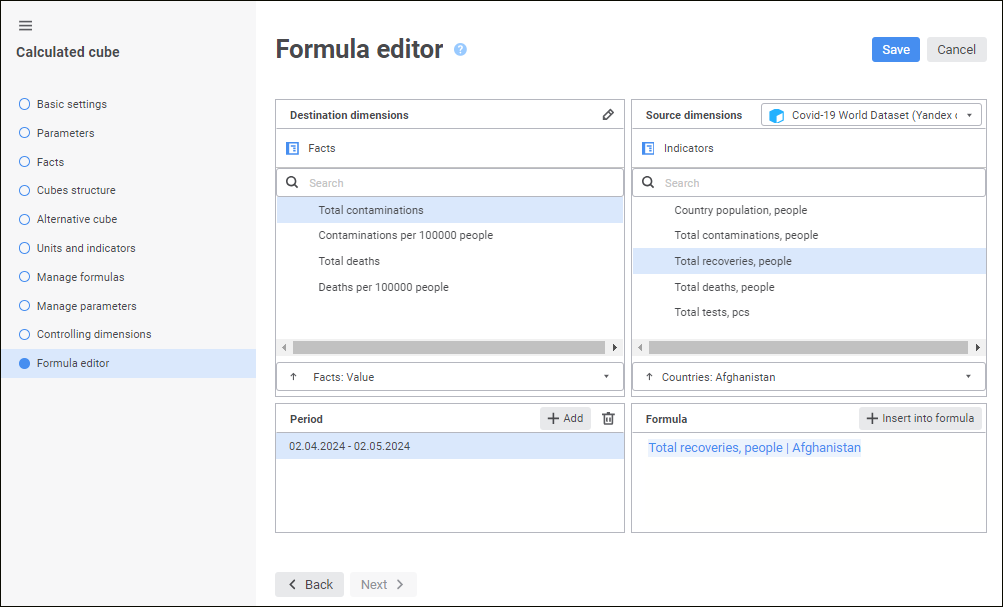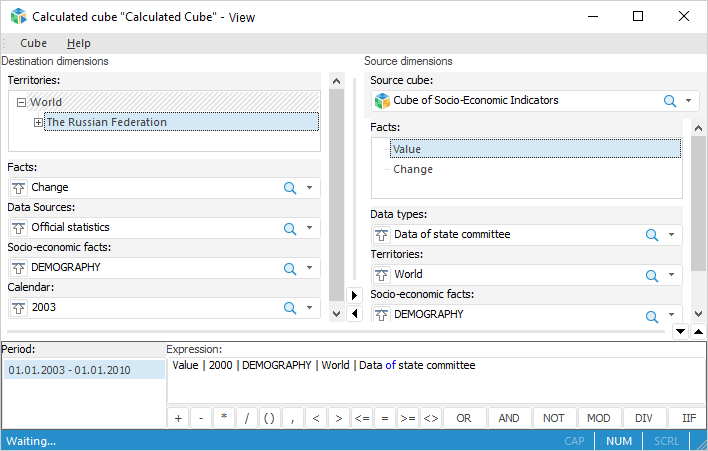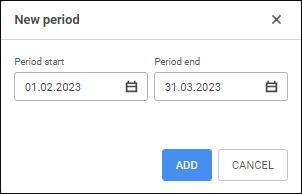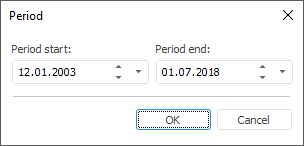Calculated Cube Formula Editor
The formula editor is used to set calculation formulas of the calculated cube. To open the formula editor:
In the web application go to the Formula Editor page of the calculated cube wizard.
In the desktop application in the object navigator select the Edit Formulas item in the calculated cube's context menu.


The areas are available in the formula editor:
Dimension areas:
Destination Dimensions. The area displays non-fixed dimensions of a destination cube.
Source Dimensions. The area displays non-fixed dimensions of the cube selected in the Source Cube box.
 Features of working with dimension areas
Features of working with dimension areas
Period. The area contains a list of all formula actual periods for the selected destination cube coordinate. The list is available if formula management is set for a calculated cube.
Expression. The area is used to create an expression, by which a value in the selected destination cube coordinate will be calculated.
 Features of setting expression
Features of setting expression
Searching for a Dimension Element
Dimension element search is available only in the desktop application.
To search for dimension elements:
Select the Find context menu item.
Press CTRL+F.
The standard search dialog box opens:

Use the Find Next button for a sequential search. Focus moves to the next found element consecutively. Click the Close button to close this dialog box.
Setting Up Formula Actual Periods
The Period list includes all formula actual periods for the selected destination cube coordinate. A specific value calculation formula is specified for each period.
To add a period, click the  Add button in the web application or select the Add context menu item in the desktop application. The period creation dialog box opens:
Add button in the web application or select the Add context menu item in the desktop application. The period creation dialog box opens:


Specify period start and end dates in the dialog box.
NOTE. If the new period overlaps the existing ones, an appropriate message is displayed. If the answer is positive, a new period is added or edited, and all the periods completely contained within it are deleted and the periods partially contained in the new period are edited so that they do not overlap.
To edit the selected period, double-click the period in the web application or select the Edit context menu item in the context menu. The dialog box opens that is similar to the one for period creation.
To delete the selected period:
In the web application click the
 Delete button.
Delete button.In the desktop application select the Delete context menu item. A confirmation dialog box opens.
Creating a Formula
A formula is set for a destination cube coordinate. Select all the cube dimensions to create a coordinate. Source cube coordinates are also used in expressions.
To add a source cube coordinate to the expression, for destination cube coordinate:
In the web application select the source dimension element and click the
 Insert into Formula button.
Insert into Formula button.In the desktop application select the Add into Formula item in the source dimension element's context menu.
As a result, the current position of the Expression box displays the expression element corresponding to source cube coordinate.
If a calculated cube uses a formula actual period, and there are no periods created for the selected coordinate of the destination cube, executing any of these operations opens a dialog box for creating a period.
One can use various mathematical functions and operations to create an expression:
| Function/Operation | Description |
| + | Addition. |
| - | Subtraction. |
| * | Multiplication. |
| / | Division. |
| = | "Equal" sign. |
| <> | "Not equal" sign. |
| < | "Less than" sign. |
| > | "Greater than" sign. |
| <= | "Less than or equal to" sign. |
| >= | "Greater than or equal to" sign. |
| () | Brackets. |
| AND | And. |
| DIV | Integer division. It returns the integer portion of a division. |
| IIF | Conditional operator: IIF(<condition>,<expression if the condition is correct>,<expression if the condition is incorrect>). |
| LAGVAL | Getting value with offset by calendar dimension with the specified lag: LAGVAL(@<element>, <lag determining the offset>). If the lag value is positive, the offset is backward by the calendar dimension. If the lag value is negative, the offset is toward by the calendar dimension. The offset is executed by the calendar level where the current calculation point is located. To provide a correct work of the function, the definition of lags for dimensions may be required. NOTE. If a cube contains several calendar dimensions, the first calendar dimension is used. |
| MOD | Integer division. It returns the remainder of a division. |
| NOT | Not. |
| OR | Or. |
TIP. To get examples of expressions, see the Examples section.
Closing the formula editor automatically saves the selected source cube, the order of the source cubes and destination cube dimensions, the selected dimension elements, the way the names are displayed in dimensions and formulas and the parameters, based on which the dimensions are built. On the next opening of the calculated cube formula editor it is opened using the saved settings.
To save the formula:
In the web application click the Save button.
In the desktop application select the Cube > Save main menu item.
Using Application Functions
Application function can be used to calculate formulas. Function can contain any number of parameters (mandatory or optional) and must return any simple data type. Cube coordinates can be passed to the function. To do this, in the function signature, parameters with the ICalculatedCubeInstanceCoord. If a coordinate is specified in expression, the actual value by the specified coordinate will be sent to the function. Example: Calc_Functions.Sample1(Russia|2000). To send the coordinate to the function described by the ICalculatedCubeInstanceCoord interface, enter the @ character before the coordinate in the expression. Example: Calc_Functions.Sample2(@Russia|2000).
Changing Parameter Value
If the destination cube has parameters in the desktop application, it can be reopened with new parameter values. To do this, select the Cube > Change Parameter Values main menu item.
The Determine Parameter Values dialog box opens, in which determine values.
If the destination cube is not parametric, the cube is reopened.
Closing Formula Editor
To close the formula editor:
In the web application click the Cancel button. The calculated cube wizard will be closed.
In the desktop application execute one of the operations:
Select the Cube > Close main menu item.
Press ALT+F4.
If the created or edited formulas were not saved before closing the editor, a message prompting the user to save these formulas is displayed. If the answer is Yes, the formulas are saved, otherwise they are not.

 Expand button in the web application or the
Expand button in the web application or the  Expand button in the desktop application, clicking which makes the dimension active.
Expand button in the desktop application, clicking which makes the dimension active.